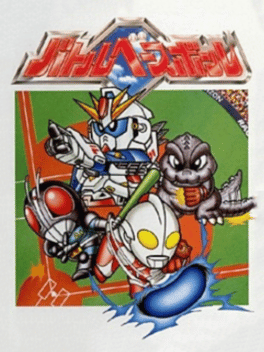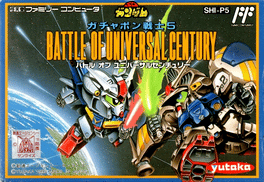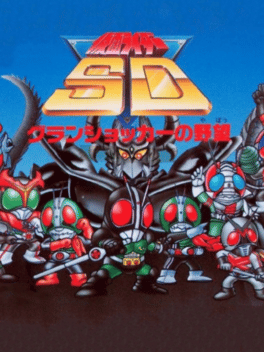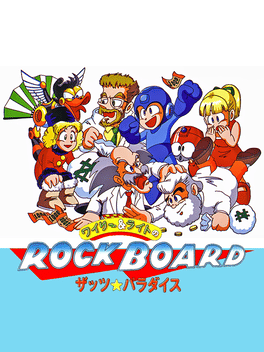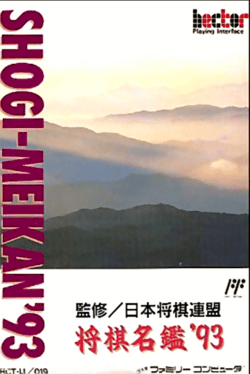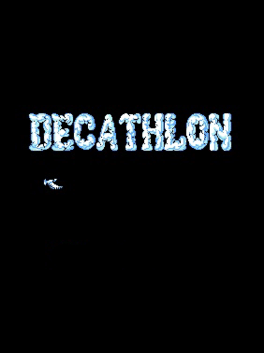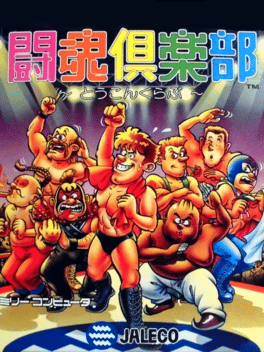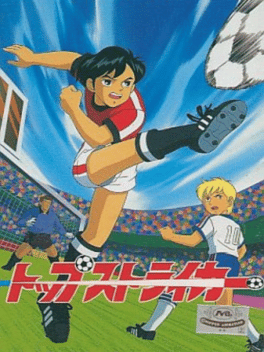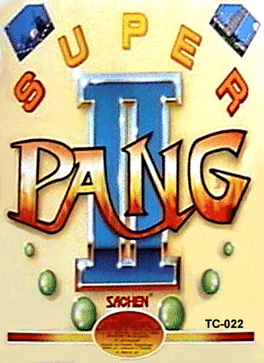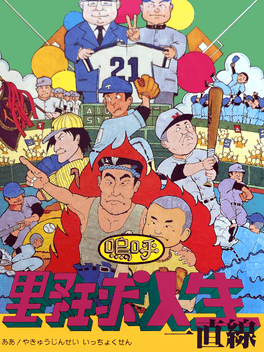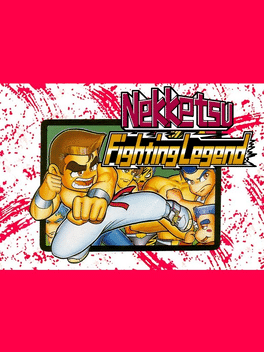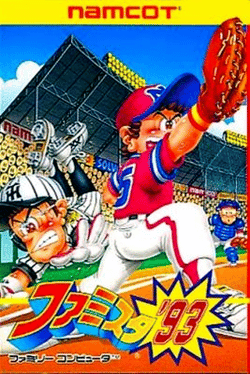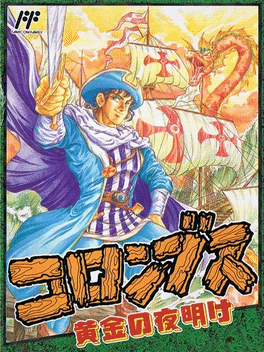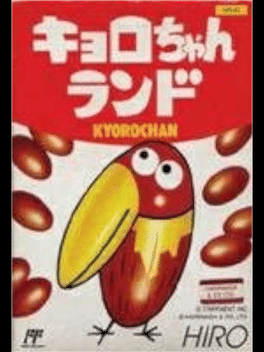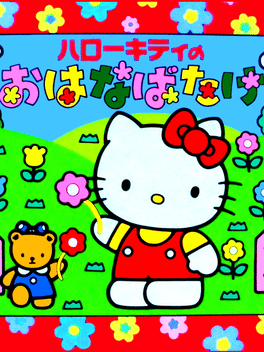New Family Computer Games - Page 15
-
Battle Baseball
1993
Battle Baseball
1993
Battle Baseball is a Japan-only baseball video game developed by Vic Tokai and published by Banpresto for the Famicom on February 19, 1993. A part of the collaborative "Compati Sports Series" (コンパチスポーツシリーズ Konpachi Supōtsu Shirīzu) in the Compati Hero series, it crosses over characters from several popular Japanese franchises, including Godzilla, Ultraman, Kamen Rider and Gundam. -
Ultraman Club: Kaijuu Daikessen!!
1993
Ultraman Club: Kaijuu Daikessen!! is an Action game, developed by Tsuburaya Prod. and published by Angel (Bandai), which was released in Japan in 1992. -
Great Battle Cyber
1993
Great Battle Cyber
1993
Great Battle Cyber is an Action game, developed by Arc System Works and published by Banpresto, which was released in Japan in 1992. -
SD Gundam World: Gachapon Senshi 5 - Battle of Universal Century
1993
SD Gundam: Gachapon Senshi 5 - Battle of Universal Century is a Strategy game, developed by TOSE and published by Yutaka, which was released in Japan in 1992. -
Kamen Rider SD: GranShocker no Yabou
1993
Kamen Rider SD is a tokusatsu-themed board game., developed and published by Angel (Bandai), which was released in Japan in 1993. -
Wily & Right no RockBoard: That's Paradise
1993
Wily & Right no RockBoard: That's Paradise is a business simulation game in which the player chooses among several characters in the original Mega Man series and competes with other players or the computer AI in purchasing spaces of property. The characters include Roll, Dr. Light, Dr. Wily, Dr. Cossack, and Kalinka. Each participant is given a turn, moving a certain number of spaces on the board. If they land on a property square, they are given the option to buy it with a certain about of Zenny (the game's currency) .They can then charge other characters rent when they land on that building. However, other characters can also buy part of the same square, allowing each owner to charge a smaller amount of rent. Some squares contain cards that cause various effects on the board such as raising property prices or the development level of a building. The game's winning conditions can vary depending on the set rules. The winner may be the character with the most owned spaces, the most remaining Zenny, or the most devel -
Shogi-Meikan '93
1993
Shogi-Meikan '93
1993
Shogi-Meikan '93 is a Miscellaneous game, developed and published by Hect, which was released in Japan in 1992. -
Chiisana Obake: Acchi Socchi Kocchi
1993
Chiisana Obake: Acchi Socchi Kocchi is a Puzzle game, developed by Atlus and published by Vap, which was released in Japan in 1992. -
Decathlon
1992
Decathlon
1992
The game can be played alone or with a friend. It offers 2 different modes: Single game (play only one sport) or Full game (play them all). The player can compete in these sports disciplines: - 100-meters - Long Jump - Shot put - High Jump - 400-meters - 110-meters hurdles - Discus throw - Pole vault - Javelin throw - 1500-meters -
Toukon Club
1992
-
Top Striker
1992
-
Super Pang II
1992
-
Aa Yakyuu Jinsei Icchokusen
1992
Aa Yakyuu Jinsei Icchokusen is a board game. The title translates to "Straight Baseball Life". Players assume the role of a small child who goes through the ranks and eventually becomes a professional baseball player if the player is successful. -
Nekketsu Fighting Legend
1992
star 7One day at school, Kunio was minding his own business when suddenly, he found a note on his locker. The note says their is a fighting tournament hosted by the "Double Tiger" twins. Seeing it as a challenge he could not refuse, Kunio runs off to participate. When Riki sees Kunio running and read his note, he decides to enter as well. Many other fighters will join in to see who is the strongest. The game was originally released as Nekketsu Kakutou Densetsu, but has since been localized as Nekketsu Fighting Legend. -
Famista '93
1992
-
Columbus: Ougon no Yoake
1992
A nautical strategic RPG hybrid action in the vein of Uncharted Waters. You follow the life of Christopher Columbus as he goes from rookie captain to his landing in America. After a few tutorial missions, you get turned loose on an open world to build fame for yourself by doing quests, slaying rare monsters holed up in dungeon areas, etc., until a King of a prominent country can be convinced to support your expedition to the New World. -
Barcode World
1992
Barcode World
1992
A strategy game released in Japan on December 18th, 1992. Used in conjunction with the Barcode Battler II peripheral, Barcode World made a strategy game out of scanning a large number of Japanese consumer products. -
Just Breed
1992
-
Kyoro-chan Land
1992
Kyoro-chan Land
1992
The game is based on "Kyoro-chan," the mascot character of Morinaga Choco Balls, a popular confectionary from Morinaga Seika. -
Hello Kitty no Hanabatake
1992
Hello Kitty no Hanabatake is a children's platform game developed by Character Soft, a video game publishing subsidiary of Sanrio, for the Nintendo Family Computer. It was released on December 11, 1992 exclusively in Japan. During the course of this video game, Hello Kitty must water all the flowers in each stage while avoiding the many animals and insects. Kitty's ribbon always stays on the left side of her ear; even if the player changes the orientation of the character. She can defend herself with the use of a large mallet. Running into enemies will make her cry, which causes Kitty to get angry and lose a life. Points in the game are collected as money for the cash register. Allowing the time limit to expire will also cause the player to lose a life. However, there are infinite continues and losing the game score is the only penalty for "game overs." There are 18 stages in the game and the game does not repeat itself after the 18th stage. While the second half of the game is more difficult then the first nine l
